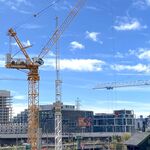lafard
Active Member
In reality it's starting to sound like there is going to be way more activism directed towards saving Eglinton so that's probably where the money will end up going. The SRT conversion is fairly likely to proceed as well as it's grade separated all the way to Malvern and thus acceptable to the Ford administration. The TTC will almost certainly favour extending the line ove converting an existing route/making an alternative route to the same endpoint. Finch LRT is a question mark, as is a Sheppard LRT while there is no money for any useful subway extension. Any leftover money would probably be going towards extending the grade-separated segment of Eglinton.
This is not actually that bad an outcome. In the longer term, if we get a DRL underway 2015-2020, and a couple LRT lines thrown in post-Ford we're in pretty good shape actually, esp. if they're shovel-ready at the next election.
This is not actually that bad an outcome. In the longer term, if we get a DRL underway 2015-2020, and a couple LRT lines thrown in post-Ford we're in pretty good shape actually, esp. if they're shovel-ready at the next election.
Last edited:




